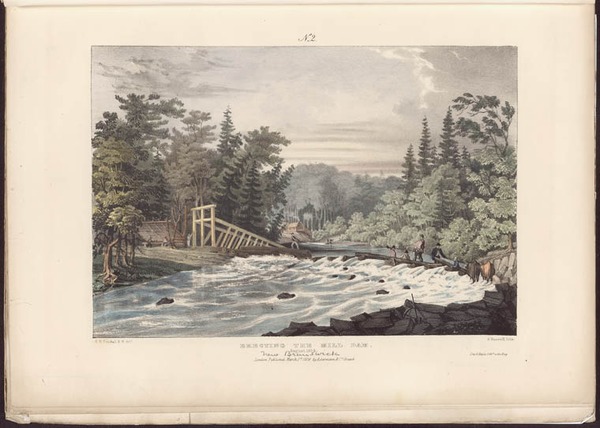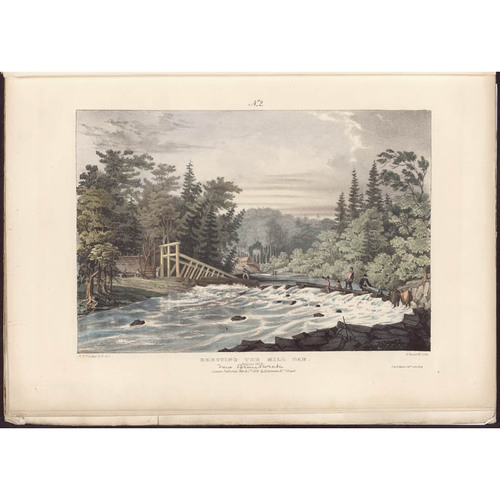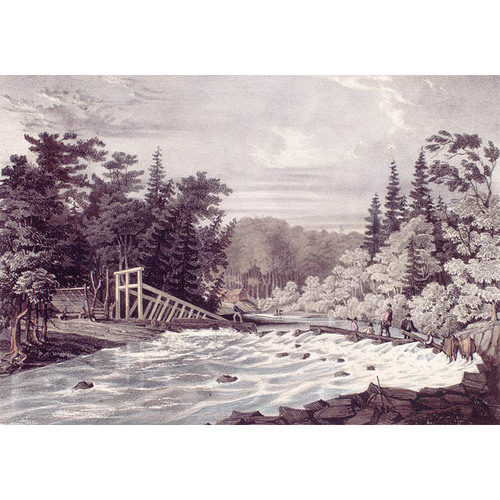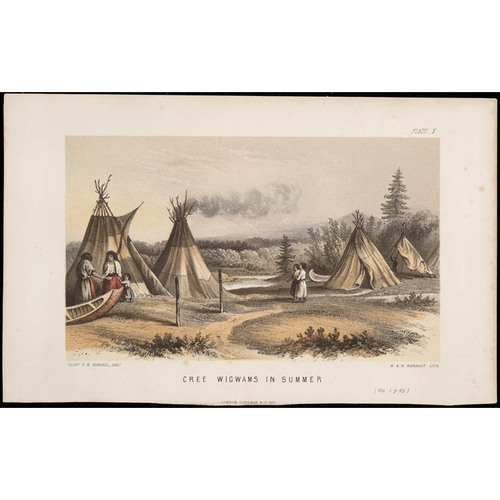As part of the funding agreement between the Dictionary of Canadian Biography and the Canadian Museum of History, we invite readers to take part in a short survey.
KENDALL, EDWARD NICHOLAS, naval officer, Arctic explorer, hydrographer, and author; b. October 1800, probably in England, eldest of four children of Edward Kendall and M. C. Hicks; m. May 1832 Mary Anne Kay, and they had four children; d. 12 Feb. 1845 in Southampton, England, and was buried at Carisbrooke, Isle of Wight.
The son of a naval captain, Edward Nicholas Kendall was a member of an old Cornish family, the Kendalls of Pelyn, near Lostwithiel. He was educated at the Royal Naval College, Portsmouth, and entered the Royal Navy on 26 Oct. 1814. He served as a midshipman on a number of ships, one of which, the Erne, was wrecked off the Cape Verde Islands in 1819. In the struggle to save the vessel’s stores, he received injuries from which, by his own account, he never fully recovered. Other early experiences included surveying in the North Sea for three years, in consequence of which he was selected to act as assistant surveyor on George Francis Lyon’s Arctic expedition of 1824. The expedition, which was to cross the Melville Peninsula (N.W.T.) and explore part of the north coast of North America, failed to penetrate through Roes Welcome Sound and returned home. Lyon reported favourably on Kendall’s work, and Kendall was again selected for Arctic service, with John Franklin, who set out overland for the Mackenzie River in 1825 to explore the north coast westwards and eastwards from the Mackenzie delta. Kendall served as assistant surveyor on the eastern branch of the expedition under Dr John Richardson* in 1826; they successfully charted the coast from the delta to the Coppermine River. The expedition returned to England in 1827, and on 30 April of that year Kendall was commissioned lieutenant. Evidently both Franklin and Richardson had held him in high regard throughout the expedition. After their return Franklin was moved to write to Kendall’s mother praising her son’s “talent, enterprize and unwearied zeal,” adding that “the amiableness and piety of his mind, his goodness of disposition and his ever cheerful temper induced and strengthened that esteem and regard that we shall ever entertain for him.”
In 1828 Kendall joined the Chanticleer for a scientific voyage to the South Atlantic and, particularly, to the South Shetland Islands region of the Antarctic. Again his main duty was surveying. After most of the expedition’s work was complete, Kendall left the Chanticleer at St Helena early in 1830, and was transferred to the Hecla to continue a survey of the west coast of Africa that had been interrupted by the death from disease of many of the ship’s officers and crew. That survey, once resumed, was cut short by the defectiveness of the Hecla, which arrived back in England later in 1830.
After his return Kendall was sent, under the direction of the Colonial Office, on a confidential mission to determine by astronomical observation disputed points on the boundary between New Brunswick and Maine [see Sir Howard Douglas*]. He conducted other surveys in New Brunswick during that mission, and upon his arrival home in 1831 he was engaged in the compilation of a map of the province. Colonial Secretary Lord Goderich recommended Kendall for promotion after that service, Kendall petitioned the king to the same purpose, and a hearty commendation to the Admiralty from Franklin followed. All these requests went unheeded and Kendall remained a lieutenant; he apparently did not see active service again. In 1832 he married a niece of Franklin, who was delighted by the match.
About 1833 Kendall became involved in the New Brunswick and Nova Scotia Land Company, formed to promote the development by immigrants of a tract purchased from the government in New Brunswick [see Thomas Baillie*]. As the company’s commissioner at Fredericton, he issued a report to the directors on the general condition of the colony in 1835, but nothing is known of his further involvement with the company. While in Fredericton the Kendalls became close friends of James Robb* and his family.
By March 1838 Kendall had returned to Britain, where he pursued his interest in steam transportation, becoming superintendent of the West India Mail Steam Navigation Company. About 1843 he joined the Peninsular and Oriental Steam Packet Company and at the time of his death was its superintendent in Southampton. In 1855 a son, Franklin Richardson, joined the company.
Edward Nicholas Kendall is the author of “Observations on the velocity of sound at different temperatures,” in John Franklin, Narrative of a second expedition to the shores of the polar sea, in the years 1825, 1826, and 1827 . . . (London, 1828; repr. Edmonton, 1971), app.iv; “Account of the Island of Deception, one of the New Shetland Isles,” Royal Geographical Soc. of London, Journal, 1 (1830–31), no.4: 62–66; Reports nos.1 & 2 on the state and condition of the province of New Brunswick: with some observations on the company’s tract; laid before the court of directors of the New Brunswick and Nova Scotia Land Company . . . (London, 1836); and Remarks on steam communication between England and Australasia; as combined with a system of weekly communication between the colonies of Australasia (Southampton, Eng., 1842).
Kendall’s account of his journey from Fort Franklin to York Factory in 1826–27 as a member of the second Franklin expedition remains in manuscript among his papers in the Royal Geographical Soc. Arch. (London). A microfilm copy of the journal is available at the Glenbow-Alberta Institute Arch. (Calgary). Among the maps produced by Kendall are those listed in Maps and plans in the Public Record Office (3v. to date, London, 1967– ), 2, nos.632, 1052–53, 1394, 4174. His topographic sketches are noted in Harper, Early painters and engravers.
Isle of Wight County Record Office (Newport, Eng.), Reg. of births, marriages, and burials, 15 Feb. 1845. NMM, P&O/100, F. R. Kendall file. N.B. Museum, J. C. Webster papers, packet 137, prospectus, New Brunswick and Nova Scotia Land Company, 28 Feb. 1833. Scott Polar Research Institute (Cambridge, Eng.), ms 248/310; 248/432/1–3; ms 696. The letters of James and Ellen Robb: portrait of a Fredericton family in early Victorian times, ed. A. G. Bailey (Fredericton, 1983). Ramsay, Dalhousie journals (Whitelaw), vol.3. Memoirs of hydrography, including brief biographies of the principal officers who have served in H.M. Naval Surveying Service between the years 1750 and 1885, comp. L. S. Dawson (2v., Eastbourne, Eng., [1883]–85; repr. in 1v., London, 1969), 1: 105.
Cite This Article
Clive Holland, “KENDALL, EDWARD NICHOLAS,” in Dictionary of Canadian Biography, vol. 7, University of Toronto/Université Laval, 2003–, accessed March 29, 2025, https://www.biographi.ca/en/bio/kendall_edward_nicholas_7E.html.
The citation above shows the format for footnotes and endnotes according to the Chicago manual of style (16th edition). Information to be used in other citation formats:
| Permalink: | https://www.biographi.ca/en/bio/kendall_edward_nicholas_7E.html |
| Author of Article: | Clive Holland |
| Title of Article: | KENDALL, EDWARD NICHOLAS |
| Publication Name: | Dictionary of Canadian Biography, vol. 7 |
| Publisher: | University of Toronto/Université Laval |
| Year of revision: | 1988 |
| Access Date: | March 29, 2025 |






